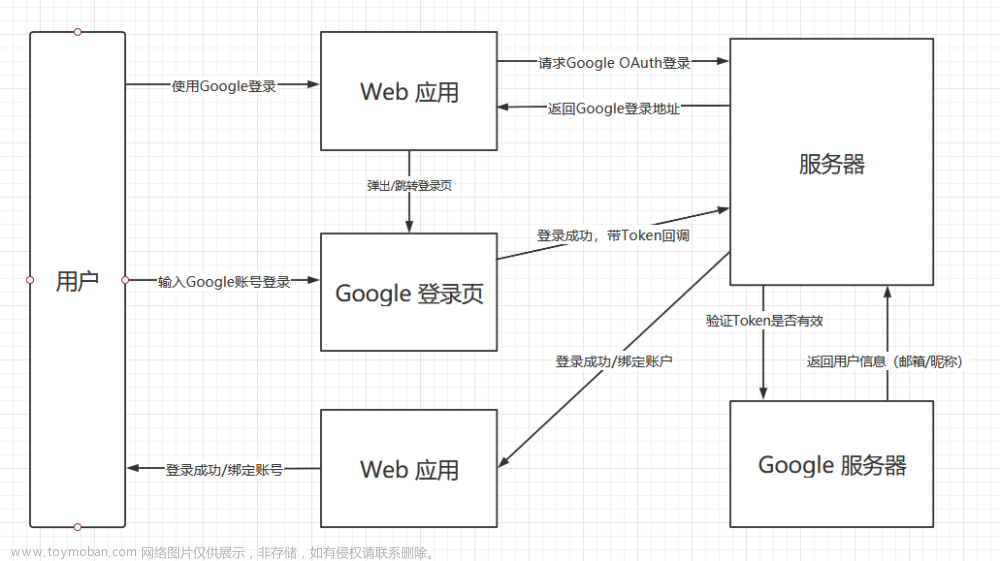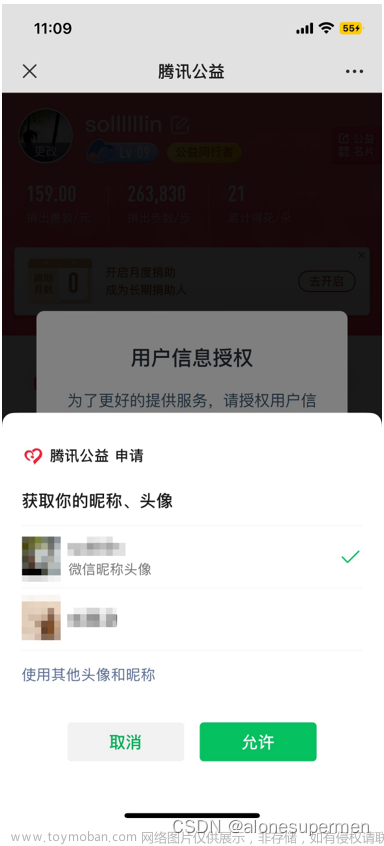首先创建OAuth 2.0 客户端 ID
配置url,必须是https的,同时复制好客户端id 和密钥

配置回调url 文章来源:https://www.toymoban.com/news/detail-631809.html
文章来源:https://www.toymoban.com/news/detail-631809.html
/**
* Google授权登录跳转。但是会重定向,建议前端跳转
*
* 前端js
* // 构建 Google 授权 URL
* const authParams = new URLSearchParams({
* response_type: 'code', //固定
* client_id: 'YOUR_CLIENT_ID', // 请将 YOUR_CLIENT_ID 替换为实际的客户端 ID
* scope: 'openid email profile', //固定
* redirect_uri: 'YOUR_REDIRECT_URI', // 在Google配置的回调url
* });
*
* const authUrl = `https://accounts.google.com/o/oauth2/v2/auth?${authParams}`;
*
通过Java接口跳转Google登录页面,会重定向,建议前端跳转
* @param response
* @return
* @throws IOException
*/
@GetMapping("/google-login")
@NoAuth
public CommonResult<String> googleLogin(HttpServletResponse response) throws IOException {
HttpTransport httpTransport = new NetHttpTransport();
JsonFactory jsonFactory = GsonFactory.getDefaultInstance();
// 设置 OAuth 2.0 授权码流对象
AuthorizationCodeFlow flow = new GoogleAuthorizationCodeFlow.Builder(
httpTransport, jsonFactory, CLIENT_ID, CLIENT_SECRET, SCOPES)
.setAccessType("offline")
.setApprovalPrompt("force") // 可选,强制用户重新授权
.build();
// 生成用户授权的 URL
AuthorizationCodeRequestUrl authorizationUrl = flow.newAuthorizationUrl()
.setRedirectUri(REDIRECT_URI);
// 重定向用户到授权 URL
response.sendRedirect(authorizationUrl.build());
return new CommonResult("success");
}
回调接口文章来源地址https://www.toymoban.com/news/detail-631809.html
@GetMapping("/google-callback")
@NoAuth //不需要登录
public ResponseEntity<String> googleCallback(@RequestParam("code") String authorizationCode) throws IOException {
System.out.println("google-callback code = "+authorizationCode);
// 创建 Google 授权码流对象
GoogleAuthorizationCodeFlow flow = new GoogleAuthorizationCodeFlow.Builder(
new NetHttpTransport(),
JacksonFactory.getDefaultInstance(),
CLIENT_ID,
CLIENT_SECRET,
Arrays.asList("openid", "email", "profile"))
.setAccessType("offline")
.build();
// 交换授权码为访问令牌
TokenResponse tokenResponse = flow.newTokenRequest(authorizationCode)
.setRedirectUri(REDIRECT_URI)
.execute();
String accessToken = tokenResponse.getAccessToken();
// System.out.println("google accessToken: "+accessToken);
String userInfo = getUserInfo(accessToken);
// System.out.println("userInfo: "+userInfo);
/** 格式
* {
* "iss": "https://accounts.google.com",
* "sub": "123456789012345678901", 表示用户的唯一标识符,通常是用户的Google ID。
* "aud": "your-client-id",
* "email": "user@example.com",
* "email_verified": true,
* "exp": 1627889766,
* "iat": 1627886166
* }
*/
JSONObject jsonObject = JSONObject.parseObject(userInfo);
String email = jsonObject.getString("email") ;
//登录逻辑
JSONObject userJson = loginByEmail(email);
String redirectUrl = "https://funflixvideo.com/#/?userId="+userJson.getString("userId")+"&sessionId="+userJson.getString("sessionId");
// 重定向到 H5 页面,并带上 session ID
HttpHeaders headers = new HttpHeaders();
headers.setLocation(URI.create(redirectUrl));
return new ResponseEntity<>(headers, HttpStatus.FOUND);
}
//获取用户信息
public String getUserInfo(String accessToken) {
String url = "https://www.googleapis.com/oauth2/v1/userinfo?access_token=" + accessToken;
try {
return HttpClient4Utils.httpGet(url, null, "utf-8", 30);
} catch (Exception e) {
e.printStackTrace();
}
return null;
}
到了这里,关于Java实现Google授权登录,OAuth 2.0登录的文章就介绍完了。如果您还想了解更多内容,请在右上角搜索TOY模板网以前的文章或继续浏览下面的相关文章,希望大家以后多多支持TOY模板网!











